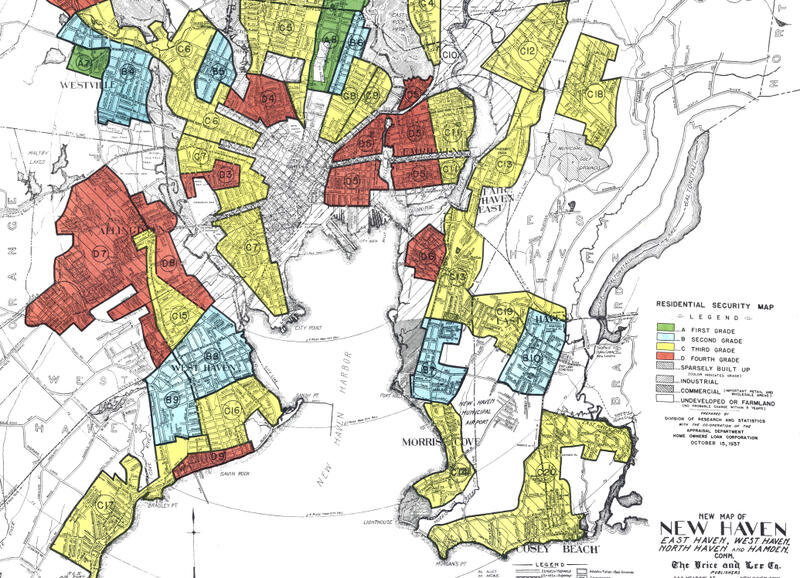Race and the Law: The Story of Housing and School Segregation in the United States
Photo from CT Public Radio
Curriculum unit. By Julia Miller.
For teachers interested in learning and teaching the basic framework of Critical Race Theory (CRT) and the need to disrupt the perceived neutrality of the law.
Through case studies, interactive websites and more, students will investigate the reciprocal nature of housing and school segregation—and meaningful approaches to dismantling both.
This unit was designed for a Constitutional Law elective but can be adapted to a U.S. History and/or Civics course as well.
Introduction
This unit was designed for a Constitutional Law elective, however, could be applicable to a U.S. History and/or Civics course as well. Students will be introduced to the basic framework of Critical Race Theory (CRT) and the need to disrupt the perceived neutrality of the law. CRT grew out of the legal field and works to recognize the deep role racism plays in all aspects of American society. Legal scholar Mari Matsuda breaks down the basic tenets of CRT into six themes, one of which is the idea that CRT “expresses skepticism toward dominant legal claims of neutrality, objectivity, colorblindness, and meritocracy.” This will be a grounding notion of this unit. Students will examine ways in which the law has been used to uphold white supremacy.
The goals of this unit will be to:
Challenge the notion that the law is neutral and unbiased, and understand how racial intent and impact was structured into the Constitution itself.
Understand the history of housing segregation in the United States and the purposeful role the government played in sponsoring and reproducing it.
Understand the history of school desegregation and resegregation in the United States and evaluate the Supreme Court’s role in creating said trends.
Examine the clear link between housing and school segregation.
Investigate modern day approaches that attempt to tackle and dismantle persistent housing and school segregation in the United States in order to find meaningful solutions.
Unit Essential Question: To what extent is the law used to uphold vs. dismantle segregation?
A New Haven map from 1937 with redlining in effect. (Photo from Connecticut Public Radio)
Teacher Introduction
I teach at an interdistrict magnet highschool in New Haven, Connecticut. In addition to taking their core classes, students choose to follow a particular “pathway” of study over their four years. I teach an 11th Grade Constitutional Law elective in the Law and Politics pathway. After a basic introduction to Constitutional Law and the Supreme Court, I design my units to be thematic- based on a particular amendment and/or issue. One of the units I teach is about the intersection between race and education. We examine the role the Supreme Court has played in both creating and impeding educational opportunities based on race. Over time, as I have taught the unit, I realized that there was a glaring omission: the prominent role that housing segregation played in causing and continuing school segregation. After taking the seminar “Teaching about Race and Racism Across the Disciplines” I also realized the need to disrupt the standard/dominant method of teaching law as neutral and unbiased. With this unit, I additionally wanted to challenge the idea that racism is something aberrant in the legal field, rooted simply in instances of individual prejudice, and that “colorblind” equality is the presumed end goal. I decided to create a unit that would help students understand the systemic nature of racism and white supremacy in government action and the law, particularly as it relates to segregation in the United States, with an ultimate goal that students start to imagine a way to push back against it.


